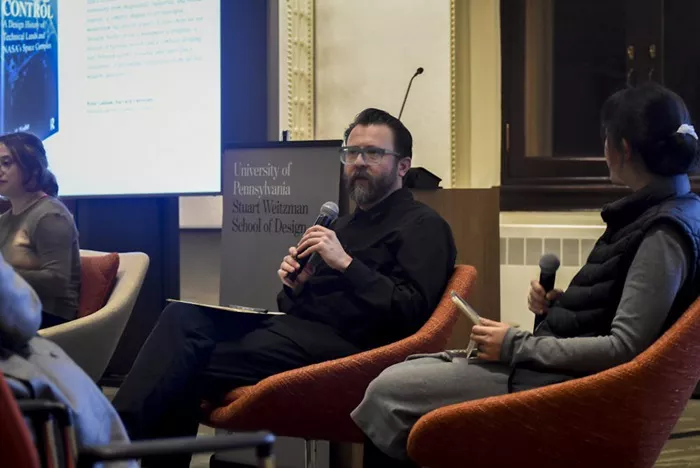Temple University’s Stuart Weitzman School of Design recently hosted Jeffery S. Nesbit, a professor at Temple University’s Tyler School of Art and Architecture, for a discussion on his new book, Ground Control: A Design History of Technical Lands, on February 27.
The event began with a lecture by Nesbit, followed by a roundtable discussion that delved into the transformation of NASA’s facilities into what Nesbit terms “technical lands.” These areas, he explained, extend beyond political and physical boundaries, offering a fresh perspective on infrastructure.
“In the ’50s, the space programs were seen as a nation-building exercise, in part to compete with the Soviets,” Nesbit shared. “What’s fascinating is that the design of these facilities was driven by cultural choices, not just technological ones.”
This approach challenges the typical view of infrastructure by suggesting that the development of launch facilities reflects shifting cultural narratives, rather than purely engineering needs.
“When the space program began, the only infrastructure was a wooden shed to house the electrical equipment that powered the rockets,” Nesbit explained. “As the rockets grew larger, so did the architecture, mirroring changes in our worldviews over just 12 years.”
The event, a collaboration between the Weitzman School of Design and the Tyler School of Art and Architecture, provided Penn students and the Philadelphia community with a unique opportunity to engage with new research and ideas.
“We were given the chance to moderate a panel with Nesbit,” said Mel Bellker, a first-year graduate student in Landscape Architecture and Fine Arts. “It was a great experience to interact directly with the author, discuss the book, and exchange ideas with one another.”
Noa Machover, a third-year graduate student, added that Professor Rebecca Popowsky played a key role in encouraging students to formulate thoughtful questions for the discussion. “It’s about actively engaging with ideas, collaborating, and figuring things out together,” he said.
The conversation also emphasized the importance of reflecting on existing conditions before moving toward futuristic visions. This approach resonated with students studying the intersection of technology, landscape, and its societal impacts.
“As space exploration and eventual settlement seem inevitable, we must think about how we design for the future,” said Dagny Elise Carlsson, a student pursuing a dual master’s degree in architecture and landscape architecture. The discussion raised questions about how private companies like SpaceX and Blue Origin might change space infrastructure and surrounding communities.
Nesbit also touched on the privatization of space exploration, citing Elon Musk’s work on launching rockets from the Mexico-Texas border. “Musk is trying to privatize a town near the border, while many federal sites were initially remote, with no communities living there,” Nesbit said. “In the future, the pressure on these activities will vary significantly.”
Machover reflected on how Nesbit’s book sheds light on overlooked landscapes and mechanisms. He hopes that the discussion will spark further interest in these topics.

